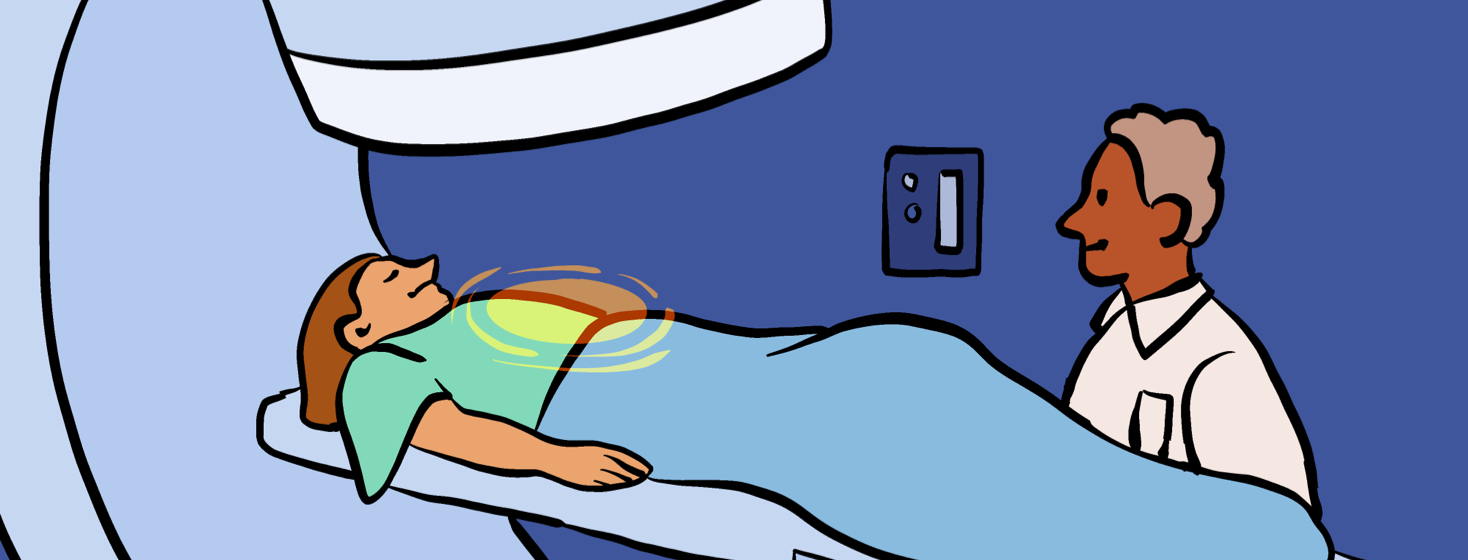Stereotactic Body Radiation Therapy
Reviewed by: HU Medical Review Board | Last reviewed: September 2025 | Last updated: October 2025
Stereotactic body radiation therapy (SBRT) is a form of radiation therapy that helps kill tumors. Radiation is a form of energy that can be used safely at low doses. For example, an X-ray is a form of low-dose radiation. At high doses, radiation can damage cells. That means that high doses of radiation can shrink or kill a cancerous tumor.1
Radiation kills cancer cells by damaging their DNA, or genetic blueprint. When the DNA is damaged, the cells cannot reproduce, and they die. The cells often do not die after one treatment. It usually takes multiple days of treatment to damage enough cells to kill the tumor.1
How is SBRT different from other forms of radiation?
SBRT focuses a high dose of radiation on a small area. Other forms of radiation target larger areas. They are helpful for cancers that have spread to multiple areas. But they carry a risk of killing healthy cells in your body. SBRT focuses on the tumor, which helps save your healthy cells and tissues.2-5
SBRT is typically used over several days. Other forms of radiation are usually given over a few weeks. These forms of radiation are given over a longer period of time because they use lower doses of radiation. SBRT uses a high dose of radiation over a shorter time.2-5
SBRT is used to treat several types of cancers. Lung, pancreas, liver, and prostate cancers are a few types that can be treated with SBRT.2-5
How is SBRT used in lung cancer treatment?
Because early-stage lung cancers may be small tumors in the lung, SBRT is a good potential option for treatment. It is often preferable to other forms of radiation that target large areas. It can also be a better option than surgery, which has more risks and side effects. Additionally, some people may not be healthy enough for surgery.2-5
Getting SBRT is a painless process. Before you begin SBRT, you will have a lot of imaging done. This helps your doctor find the tumor and make a radiation plan. Your doctor may order:3
- X-rays
- CT scans
- MRIs
You will also have to do a simulation session. During this session, you will be in a device that prevents you from moving. Then your doctor will measure how your lungs move while you breathe so they can make your treatment plan even more exact.3
Once you are ready for SBRT treatment, you will lie on a table to receive the radiation. It can last over an hour, but it is generally faster. A machine will deliver radiation beams to the tumor in your lungs.4
SBRT usually takes between 1 to 5 sessions. You may get it every day until all of your sessions are done. Or you may skip days in between your treatment days.2-5
Are there side effects with SBRT?
For people with lung cancer, SBRT has few side effects. Most people do not feel any difference afterward, and there is no change in their breathing. However, within a few weeks after your treatment, you may feel tired. You may feel like you have a cold. You may have a cough that might produce phlegm. If you notice changes in your breathing or have trouble breathing, you should call your doctor right away.4

Join the conversation